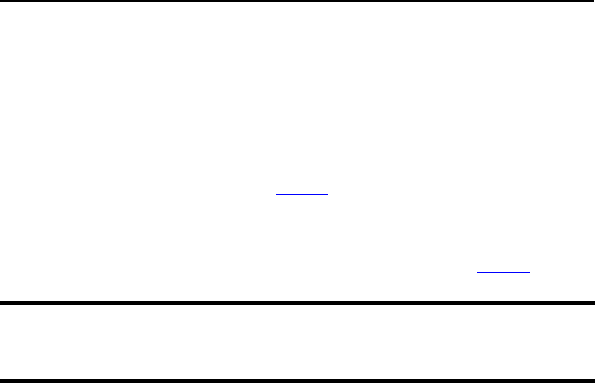User Manual - Series B Instruction Manual
Table Of Contents
- Front Cover/Table of Contents
- General Description
- What Is the DriveGuard Safe Torque Off Option?
- Certifications and Compliance
- CE Certification
- Certified Equipment
- Important Safety Considerations
- Safe State
- Safety Category 3 / PL (d) Performance Definition
- Stop Category Definitions
- Performance Level and Safety Integrity Level (SIL) CL2
- PFD and PFH Definitions
- PFD and PFH Data
- Functional Proof Tests
- Contact Information if Safety Option Failure Occurs
- Installation and Wiring
- Pre-Installation Instructions
- EMC Considerations
- DriveGuard Safe Torque Off Option Installation
- Wiring
- Verify Operation
- Description of Operation
- PowerFlex 40P Safe Torque Off Operation
- PowerFlex 70 Safe Torque Off Operation
- Connection Examples
- Back Cover

Rockwell Automation Publication PFLEX-UM003B-EN-P - July 2012 7
General Description
Stop Category Definitions
The selection of a stop category for each stop function must be determined by
a risk assessment.
• Stop Category 0 is achieved with immediate removal of power to the
actuator, resulting in an uncontrolled coast to stop. See “Description of
Operation” Example 1 on page 20
.
• Stop Category 1 is achieved with power available to the machine actuators
to achieve the stop. Power is removed from the actuators when the stop is
achieved. See “Description of Operation” Example 2 on page 21
.
Performance Level and Safety Integrity Level (SIL) CL2
For safety-related control systems, Performance Level (PL), according to EN
ISO 13849-1, and SIL levels, according to IEC 61508 and EN/IEC 62061,
include a rating of the system’s ability to perform its safety functions. All of
the safety-related components of the control system must be included in both
a risk assessment and the determination of the achieved levels.
Refer to the EN ISO 13849-1, IEC 61508, and EN/IEC 62061 standards for
complete information on requirements for PL and SIL determination.
PFD and PFH Definitions
Safety-related systems can be classified as operating in either a Low Demand
mode, or in a High Demand/Continuous mode.
• Low Demand mode: where the frequency of demands for operation made
on a safety-related system is no greater than one per year or no greater
than twice the proof-test frequency.
• High Demand/Continuous mode: where the frequency of demands for
operation made on a safety-related system is greater than once per year or
greater than twice the proof test interval.
IMPORTANT
When designing the machine application, timing and distance should be considered
for a coast to stop (Stop Category 0 or Safe Torque Off). For more information
regarding stop categories, refer to EN/IEC 60204-1.
PFLEX-UM003.fm Page 7 Wednesday, July 18, 2012 8:26 AM










